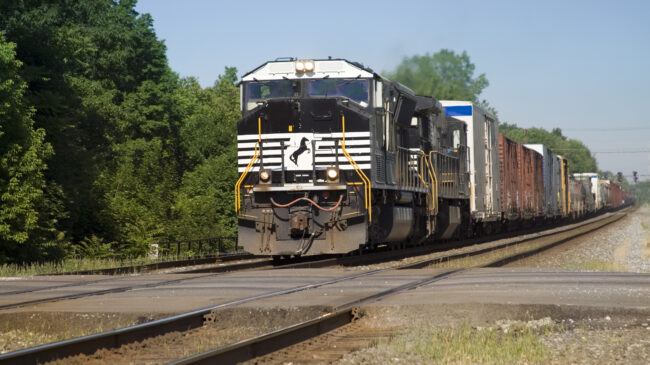The following testimony was provided by Reason Foundation to the Surface Transportation Board on Feb. 7, 2022.
Re: Application of the National Railroad Passenger Corporation under 49 U.S.C. § 24308(e)—CSX Transportation, Inc., and Norfolk Southern Railway Company; Docket No. FD 36496
On behalf of Reason Foundation, I respectfully submit this comment letter for the Board’s consideration in the FD 36496 proceeding. Reason Foundation is a national 501(c)(3) public policy research and education organization with expertise across a range of policy areas, including transportation. I am not requesting time to speak during the initial phase of the hearing, scheduled to begin on February 15.
We are concerned about the potential for inefficient Amtrak trains to displace efficient freight trains. Due to the differences between freight and passenger trains—namely speed and length—increasing Amtrak train density on the host railroads’ tracks is anticipated to cause significant disruptions to freight rail operations. Rail carriers and shippers on the Gulf Coast have understandably sounded the alarm to the Board that without additional infrastructure capacity, Amtrak’s proposed passenger rail operations would negatively impact their businesses and their customers.
In addition to these private costs, the Board should be aware of the additional social costs that are likely to arise with granting Amtrak’s 49 U.S.C. § 24308(e) application. Faced with less-reliable rail service, some shippers are likely to shift their traffic to trucks, particularly intermodal traffic where rail carriers most directly compete with truck carriers. This modal substitution would worsen environmental outcomes because when compared to freight rail on a ton-miles basis, the U.S. Environmental Protection Agency estimates that trucks emit approximately 10 times as much carbon dioxide (CO2), two-and-a-half times as much nitrogen oxides (NOX), and more than three times as much particulate matter (PM10) and fine particulate matter (PM2.5). Modal average emissions metrics are summarized in Table 1.

Pushing even a small share of freight rail traffic onto the highways would increase the transportation sector’s air pollution emissions intensity and undermine Congress and the Biden administration’s professed interest in greening transportation.
Thank you for the opportunity to provide comments to the Board on this important matter.
Respectfully submitted,
Marc Scribner
Senior Transportation Policy Analyst
Reason Foundation
marc.scribner@reason.org

